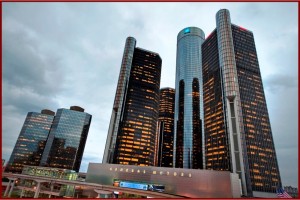General Motors Company has doubled it revolving credit agreements to $11 billion, up from an existing deal that provided $5 billion dollars, which was negotiated post bankruptcy in October of 2010. The new credit pact contains a $5.5 billion three-year line and a $5.5 billion five-year line that GM can draw from.
U.S. taxpayers still hold 32% of GM and its common stock pays no dividend, but the agreement helps strengthen the balance sheet ultimately leading the way for a stock sale and maybe recovery of the bailout costs.
In a statement, GM said the new credit terms are less expensive, with more flexible terms, and the ability to borrow in currencies other than U.S. dollars. GM Financial, GM’s captive finance company, will also be able to borrow under the new financial agreements.
GM said that the new credit deals should be rated “investment grade” by each of the major credit rating agencies, which fully participated – with impunity – in the toxic mortgage fraud that led to the Great Recession when so-called investment grade bundles of mortgage obligations turned out to actually be junk bonds. This GM paper is far, far better than those.
Thirty-five financial institutions from 14 countries participated in the syndicated transaction, underscoring the global nature of GM’s operations, as well as its improving business prospects. In 2008-2009 when GM was hurtling toward bankruptcy, such a deal would have been impossible.
“This level of commitment from the global banking community represents a strong vote of confidence in the financial strength of our company,” said Dan Ammann, GM senior vice president and CFO.
Well, yes, but it could also be just an opportunity for banks to make money with relatively low risk as the Federal Reserve continues to print money, driving down interest rates on all types of lending.


